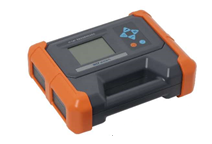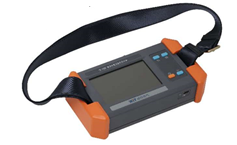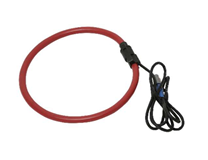T-710 Intelligent Cable Identifier

In the power industry, cable identification has to be made using very strict criteria, because it is related to personal safety and mistakes may result in damage to plant. The T-710 is a high-performance cable identification instrument, consisting of a signal transmitter and a receiver. It is used to accurately identify a specific cable among a bundle of cables. The system is suitable for on-line use (3-core armoured cable only) or for off-line cables.


Features
- Flexible clamp for receiving signals
- Load current measurement for 50Hz/60Hz cable
- Direct output or clamp coupling
- Adjustable, high output power
- Automatic impedance matching
- Clear identification of cable
- High-capacity lithium-ion battery
- Lightweight, sturdy housing
- High-accuracy digital sampling and processing with extremely narrow passband reception
- Immunity from interference
- Suppression of power frequency and harmonic interference from adjacent cables and pipelines.
Specifications
Transmitter
- Direct or clamp connection
- Clamp internal diameter 120mm
- Output frequency: 640Hz or 1280Hz
- Output power: max 10W in 10 steps
- Output voltage: max.150Vpp
- Maximum current output 0.8A
- Overload/short circuit protection
- HMI: 320 x 240 pixels LCD
- Internal battery: 4 nos.18650-, 7.4V, 6.8 Ah (operating time 7h on full charge)
- Dimensions 280 x 220 x 90mm
- Weight 2.3Kg
Receiver
- Input mode: Flexible clamp internal diameter 200mm
- Active detection frequency 640Hz, 1280Hz
- Passive detection system frequency 50/60Hz
- Current measurement: 1 – 1000A±3% AC
- HMI: 800 x 480 pixels LCD
- Battery: 2 nos. 18650 battery, 3.7V 6.8A (operating time 7h on full charge)
- Dimensions: 220 x 125 x 55mm
- Weight 0.9kg
Operating Environment
- Temperature: -10oC to +50oC
- Relative Humidity: 5 – 90%
- Ingress protection IP54
Application
Smart Clamp Method
Smart clamp identification using signal transmission is the clearest and most powerful method for cable identification. The frequency of the receiver is set at 1280 Hz or 640Hz, depending on the cable length.
For a dead cable, direct connection is used, with the best connection being core-earth. If this is not convenient a phase to sheath connection may be used, but the sheath should not be connected to earth. For live cables, the clamp coupling method is preferred.
On the target cable, the receiver will identify the frequency and other confirmatory parameters and indicate ![]() to show it is correct. A negative indication
to show it is correct. A negative indication ![]() shows that an adjacent cable has been measured.
shows that an adjacent cable has been measured.
Set Reference Method
The user will set a reference for a particular cable which will identify the phase angle and magnitude of the current in the cable. If the detector is moved to another point of the cable it will compare the new parameters to the set reference. If they match the system will indicate ![]() and the cable is identified. Alternatively,
and the cable is identified. Alternatively, ![]() indicates the cable has failed to meet the reference criteria and it is concluded that it is not the target cable.
indicates the cable has failed to meet the reference criteria and it is concluded that it is not the target cable.


